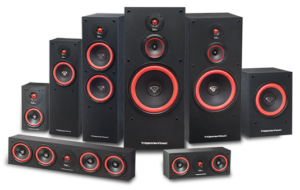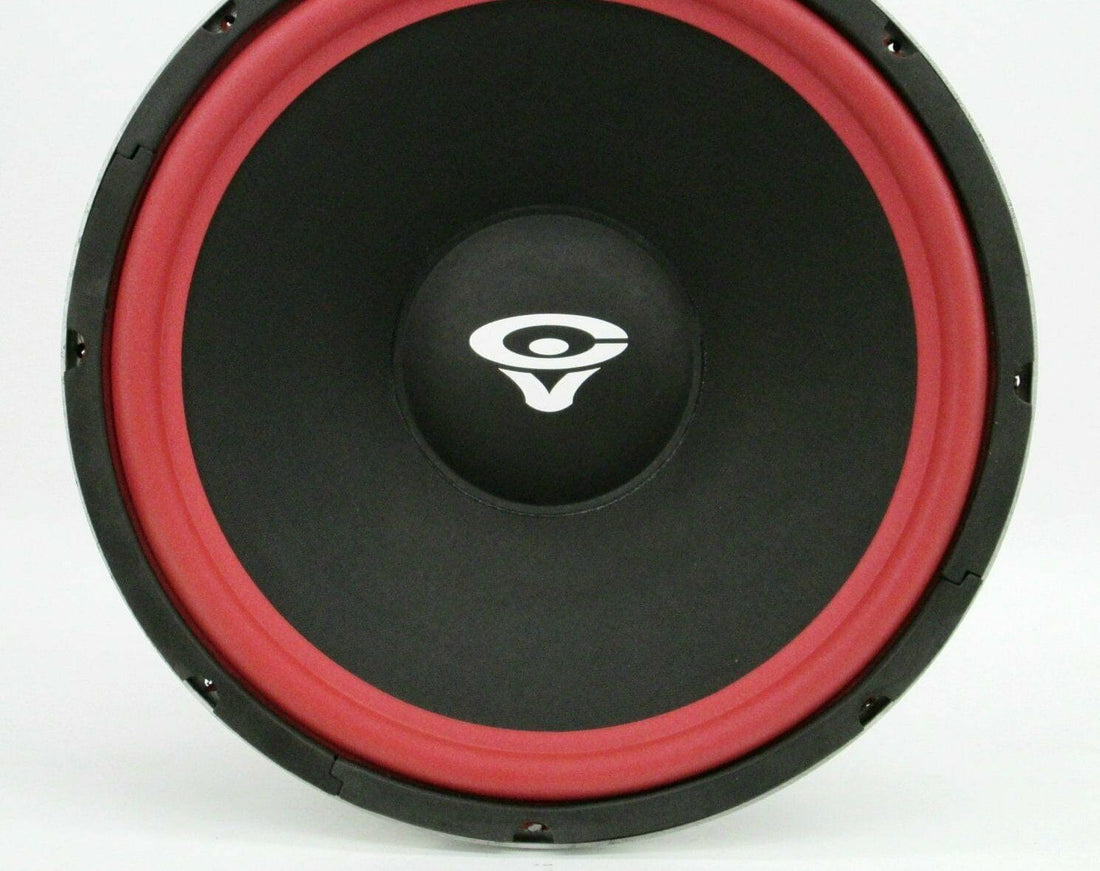One of my favorite motorcycling buddies, Ralph, invited me over yesterday to listen to his stereo system. Although he’s retired, he refuses to grow up and is still obsessed with motorcycles and music, just like me. The occasion of my visit was to audition the “new” Cerwin-Vega (CV) speakers he’d found at a thrift shop.
You might ask, “Wow, Ralph couldn’t afford better stuff at his age?”
Yes, he could buy a full Burmester system if he was so inclined. He owns five rental properties in San Diego and a ranch in Idaho. He spends his summers at the ranch, and his winters at the smallest, most dilapidated of his properties in San Diego. He laughingly advises newcomers that his neighborhood is located below the hovering police helicopters with the bright lights. His house has been broken into twice – each time he had to make insurance claims.
The irony is that one of the houses he owns is located in an exclusive beach community in North San Diego County, but he has never lived there. He feels more comfortable in the neighborhood he occupied as a starving student. Only now he doesn’t pay rent, he collects it.
In any case, he expressed delight at his thrift shop find, a pair of almost square, 3-way speakers, each with a 12-inch woofer featuring a red “racing stripe” surround like those found on redline tires. He’d placed them at the same spot we’d situated the Dynaco A25s I sold him a decade earlier, on coffee tables facing the listener about seven feet away.
Although the Dynacos sounded good at that location, I found the CVs to be unlistenable. Ralph seemed to enjoy the improved dynamics, but the shrill highs, exaggerated mids, and flabby bass made me wince like fingernails across a blackboard. The sound wasn’t helped by the poor recording quality of the pop album he was playing. I wondered about Ralph’s hearing acuity.
I remembered hearing CV speakers at audio shows in the 1970s. As they were considered “rock” speakers, I expect tight, deep bass. I knew Gene Czerwinski, founder of the Cerwin-Vega company, was certainly capable of producing it. At the 1972 Toronto hi-fi show, which was located in a hotel next to the international airport, he snuck unto the airfield at night and recorded jets taking off. On the last day of the show, it seemed jets were taking off every two minutes. Attendees complained about the difficulty of auditioning audio systems, and about the noisy location of the hotel. But when they got to the CV demo room, they found the real problem. Czerwinski was playing his jet-sounds tape on four pro audio sub-woofers loud enough to be heard across six floors.
“For god’s sake Ralph, turn it down, before you cause permanent hearing damage!” I demanded.
“What’s the matter?” he innocently asked.
“Remember when we set-up your Dynacos, I talked about the importance of the speaker/room interface?”
“Yah, but I didn’t understand what the hell you were talking about.”
“OK, trust me when I tell you that the perfect spot for the Dynacos is the worst spot for these CVs. Let’s try relocating them to make them sound better?”
“That’s what I was hoping for,” he responded.
“All right, give me a hand.”
In the interests of full disclosure, I secretly harbored a selfish reason for doing all this. Despite his quirks, I really enjoy Ralph’s company, but I’d have to stop visiting him if I was expected to tolerate those Cerwin-Vegas head-on any longer.
They were situated on a coffee table about six feet from the sidewall and three feet from the back wall. I asked him to move the left speaker into the corner and unto the floor – face-up.
“Won’t that plug the back hole?” (He meant the rear-facing bass port.)
“Oh yah, we don’t want to plug the “back hole.” Got some 2×4 lumber?”
 Vintage Cerwin-Vega D-5 speakers with that familiar red woofer surround. These have front ports though! Image courtesy of Tony Carrollo.
Vintage Cerwin-Vega D-5 speakers with that familiar red woofer surround. These have front ports though! Image courtesy of Tony Carrollo.
He led me into the garage. He was obviously excited. It was difficult to avoid tripping over motorcycle parts, old appliances, and sports equipment. No 2×4 pieces anywhere.
“Let’s look around back,” he suggested.
We found a warped 2×4 which had spent its life as a flying buttress for the Leaning Garage of East San Diego. It was vintage grey, highlighted with brown water streaks from the rusted bed frame stored on the roof.
“Nice patina,” he commented as we cut it into four pieces. I guess it’s all in how you look at it.
We placed two pieces under the left speaker already in the corner. Similarly, we placed the right speaker on the floor face-up and jammed into the right corner, also with two chunks of 2×4 underneath it to avoid plugging the “back hole.”
The results were exactly what I’d hoped for. The tweeters and mids sounded much smoother pointed away from the listener. The bass tightened up dramatically given the acoustic reinforcement from the corner. And as I’d anticipated, with relatively louder bass, Ralph was satisfied to listen at lower volumes. Those horrible speakers became listenable, even enjoyable.
“I’m hearing a wall of sound, Montana, just like at a concert,” Ralph hollered over the sound of Steppenwolf. “It’s exactly what I was looking for!”
This is the first time I’d ever set up a system in this manner, and it certainly wouldn’t suit most audiophiles. But hey, different strokes for different folks. We’re not all looking for the same thing in music, audio systems, or life.
Ralph pulled out his best bottle of cheap Scotch and we spent the rest of the afternoon on a musical exploration of the Age of Aquarius. I’m looking forward to my next visit.
 The red and the black: today's Cerwin-Vega SL Series loudspeakers still sport the classic carmine trim.
The red and the black: today's Cerwin-Vega SL Series loudspeakers still sport the classic carmine trim.


